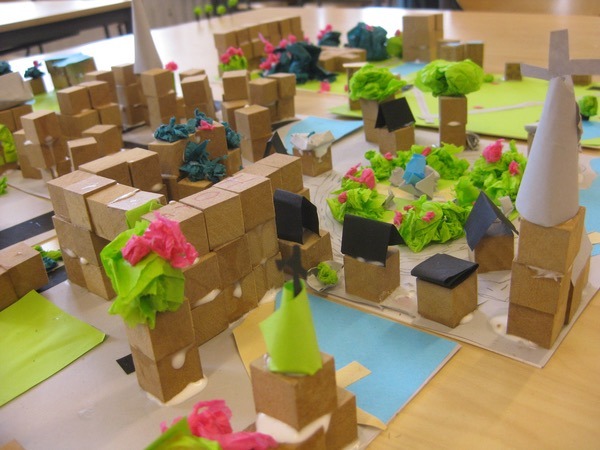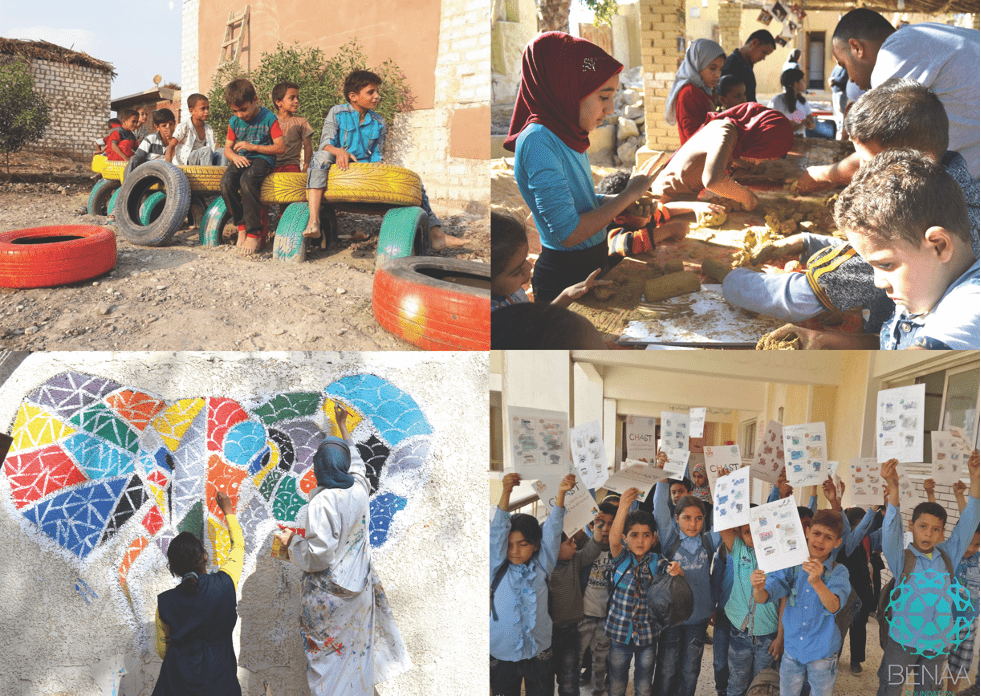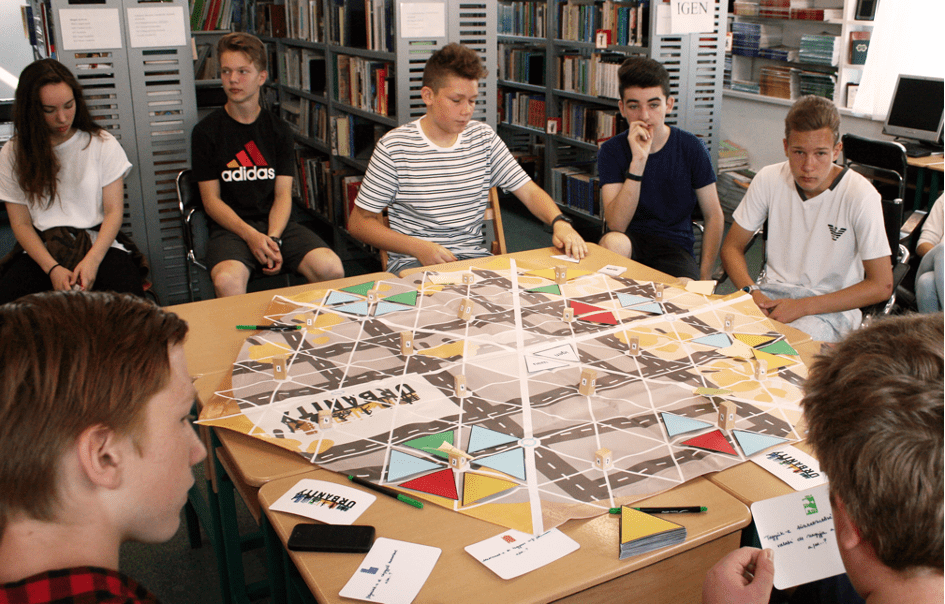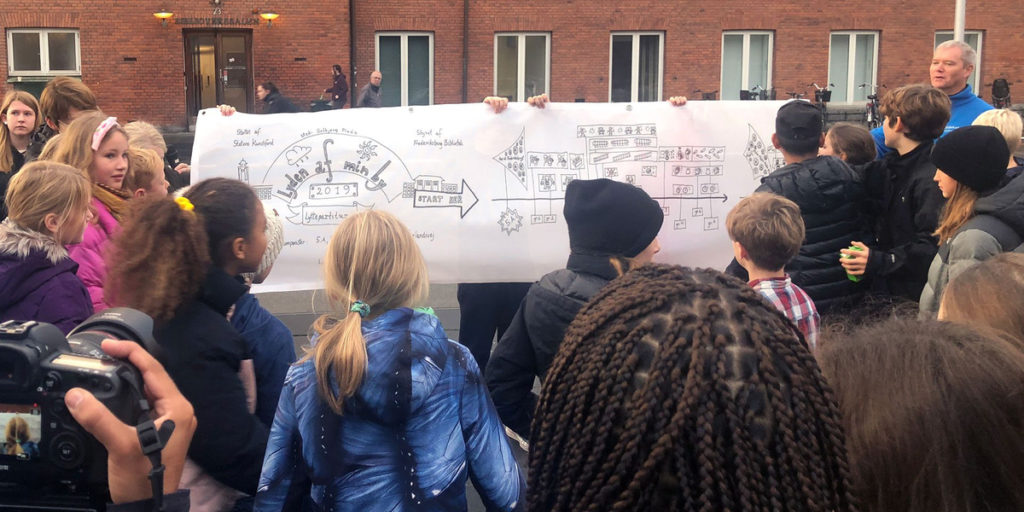The Golden Cubes Awards honour people and organisations that help children and young people to develop a better understanding of architecture and the built environment. They are organised by the UIA Architecture and Children Work Programme
The Awards are attributed in four categories: Institutions, Schools, Written Media and Audio-Visual Media.
Following a national selection process, 29 countries submitted their nominations to an international jury which met virtually on 26 March and 16-17 April to evaluate the 71 nationally nominated entries and to award one entry in each category. The jury also selected five additional entries for Special Mention.The Jury was impressed by the range of projects and products presented and the great work done by individuals and by organisations of all sizes from all over the world.
Key dates
Prizes
The prize for each winner in the International Awards will be an Award Certificate and/or Trophy. Winning and commended entries will be included in the UIA Architecture & Children Work Programme exhibition at the UIA World Congress of Architects in Rio de Janeiro.
Awards will be presented at the during a dedicated ceremony during the UIA Congress.
Theme and objectives
The Golden Cubes Awards (GCA) honour people and organizations that help children and young people to develop a better understanding of architecture and the built environment. Entrants will be invited to submit entries describing activities or products designed to teach children and young people, from pre-school up to and including the age of 18, about architectural design and the processes by which our environment is formed.
The Awards recognise, encourages, and supports individuals and organisations that lay the foundations of an architectural culture and help children and young people, from pre-school up to and including the age of 18, to understand architectural design and the processes by which our environment is shaped. This will help them, as adult citizens, to participate effectively in the creation and intelligent use of high quality architecture that is humane, sustainable and respectful of its context.
Key criteria
The following issues should be considered by the entrants in preparing their submissions. Not every criterion must be met.
- Are the educational objectives – what the children will learn and what skills they will acquire – clearly stated?
- Does it increase their understanding of architecture?
- Does it support their understanding of social, economic and ecological sustainability?
- Does it encourage sensitivity, creativity or critical thinking?
- Isitfun?
- Does it have the support of the educational authorities or of the community?
- Does it involve collaboration or interdisciplinary partnerships?
- Can it be implemented on a continuing basis?
Eligibility
1. School Award
This Award is open to any school providing general education in accordance with the state or national curriculum to children and young people. (Schools providing specialist or vocational education in the fields of art, design, architecture or related fields are not eligible in this category.)
2. Institution Award
This Award is open to Museums, Galleries, Foundations, Associations and other organisations, either singly or in collaboration with others, in any field. (Schools providing specialist or vocational education in the fields of art, design, architecture or related fields may enter in this category).
3. Written Media Award
This Award is open to individuals and organisations working in the field of written media (articles, books, magazines, non audio-visual educational tools)
4. Audio-visual Media Award
This Award is open to individuals and organisations working in the field of audio-visual media (documentaries, films, TV programmes, audio-visual educational tools).
Jury Members
- Jan Gehl, Architect, urban design consultant and founding partner of Gehl Architects
- Saria Sidky, Pedagogic, President of Amesea (Africa and Middle East Society for Education through Art)
- Stan Neumann, Media specialist, director and writer
- Mia Roth-Čerina, Architect, Guest, UIA Architecture & Children Work Programme
- Suzanne de Laval, Architect, Codirector, UIA Architecture & Children Work Programme
- Carolina Pizarro, Architect, UIA Architecture & Children Work Programme
- Mina Sava, Architect, UIA Architecture & Children Work Programme
Results
Institutions
Prizewinner: “An Expanding City”, Järfälla municipality/Järfälla culture, Sweden
“An ambitious project connecting schoolchildren, architects, planners, and the municipality in a fast-growing suburban area. Through interactive and practical activities, children get the opportunity to understand and participate in the urban development of their city. With the help of the municipality, the project is implemented in both school and leisure time”.
Special Mention:“Tactile models for Blind and Visually impaired Children”, Re Genera Espacio, Mexico
“A sensitive project aimed at reaching blind and visually impaired children. Through tactile models and sound experiments, children’s awareness of architecture and the urban environment is developed”.
Special Mention: ”BUILD”, MATT+FIONA, United Kingdom
“A complex design-build project addressing a variety of issues and scales. Children are challenged, they design, take decisions and build to learn, take responsibilities and achieve realistic long-term architecture objectives”.
Schools
Prizewinner: “Interactive School”, Benaa-Habitat Community School, Egypt
“A reality-based project. It relies on the participation of the school community. It lifts the children’s environment in poor and vulnerable areas, addressing especially the dropout from education. Children participate in the refurbishment of their own school, using available and recycled material, and thus feel that they really belong to their school, and the school belongs to them”.
Special Mention: “Comunidad Flotante / Floating Community” , School Colegio Áleph, Peru
“An enjoyable project-based-learning approach. The project is holistic, based on the development of several technical and theoretical aspects, as well as creativity and understanding of architecture as a multi-dimensional discipline”.
Written media
Prizewinner: “Urbanity” game, KultúrAktív Egyesület in Budapest, Hungary
“A large-scale game based on engaging group activities. Created primarily for teenagers, it is a dialogue-based street board game on urban phenomena. The game is very flexible, addressing various urban questions, in order to increase awareness of the complexity of town planning, architecture and civic culture”.
Special Mention: “An Architect’s Monopoly”, Hand Over Projects, Egypt
“A strategic board game which presents an innovative way of introducing multiple architectural aspects including the 17 UN Sustainable Development Goals to children. The game also emphasizes the importance of the built heritage”.
Audio-visual media
Prizewinner: “The Sound of My City”, Frederiksberg Library, ATT. Astrid Myrup , Denmark
“An original and inspiring installation to introduce children to architecture and the city, focusing on the experience of sound in relation to space and built environments. The project interacts with the local context of outdoor and indoor spaces to explore places, identities and soundscapes”.
Special Mention: “Home-made Architecture (L’architecture faite maison)”, architect Emelie Queney,
“Ten short inspiring do-it-yourself movies introducing several aspects of architecture and sustainability in a playful way”.



